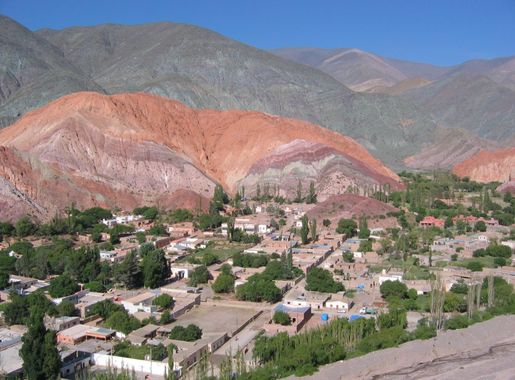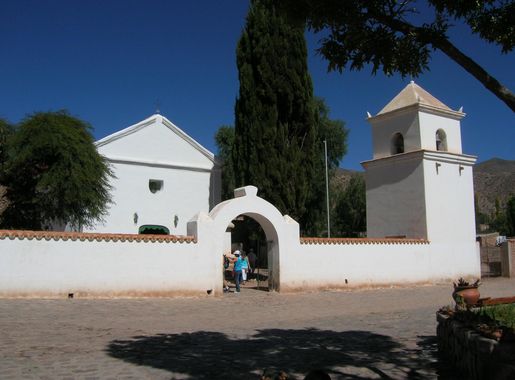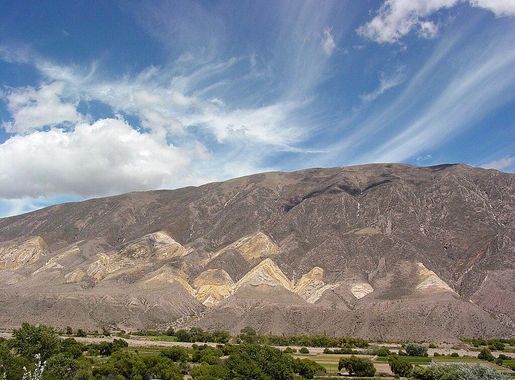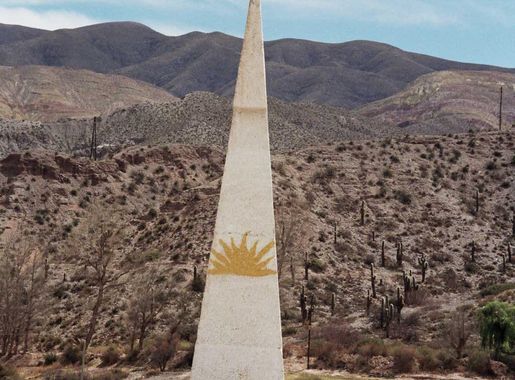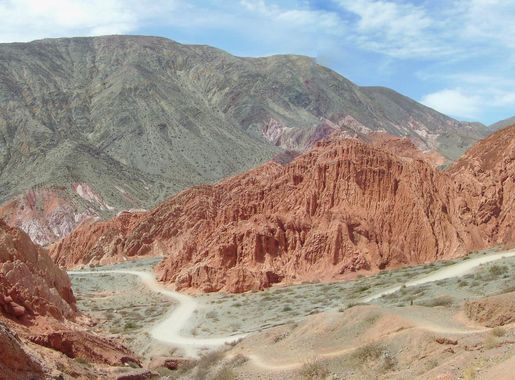
Quebrada de Humahuaca: Argentina's Timeless Valley
Discover the Quebrada de Humahuaca, Argentina's vibrant valley of history, culture, and natural beauty, where ancient trade routes meet stunning landscapes.
The Quebrada de Humahuaca, located in the Jujuy province of Argentina, is a magnificent valley stretching over 150 kilometers. Nestled between stunning mountain ranges, this UNESCO World Heritage site is a true gem for travelers seeking both natural beauty and cultural richness. The valley's vibrant, multicolored hills, known as the Hill of Seven Colors, are a must-see and a photographer's dream. Steeped in history, Quebrada de Humahuaca has been a vital trade route for over 10,000 years. Along this ancient path, you will find charming villages like Purmamarca, Tilcara, and Humahuaca, each with its own unique character and traditions. The local indigenous culture is alive and well, and you can witness traditional music, dance, and crafts that have been passed down through generations. Apart from its historical and cultural significance, the Quebrada de Humahuaca offers numerous outdoor activities. Hiking trails abound, leading you to breathtaking viewpoints and hidden archaeological sites. The region's flora and fauna are also worth exploring, adding another layer of adventure to your visit. Whether you're a history buff, a nature lover, or simply looking to immerse yourself in the local culture, Quebrada de Humahuaca promises an unforgettable experience.
Local tips in Quebrada de Humahuaca
- Visit the Hill of Seven Colors early in the morning for the best light and fewer crowds.
- Stay hydrated and bring sunscreen, as the high altitude can be intense.
- Check out the local markets for unique handcrafted souvenirs.
- Learn a few basic phrases in Spanish to connect better with the locals.
- Take a guided tour to fully appreciate the region's rich history and culture.
Quebrada de Humahuaca: Argentina's Timeless Valley
The Quebrada de Humahuaca, located in the Jujuy province of Argentina, is a magnificent valley stretching over 150 kilometers. Nestled between stunning mountain ranges, this UNESCO World Heritage site is a true gem for travelers seeking both natural beauty and cultural richness. The valley's vibrant, multicolored hills, known as the Hill of Seven Colors, are a must-see and a photographer's dream. Steeped in history, Quebrada de Humahuaca has been a vital trade route for over 10,000 years. Along this ancient path, you will find charming villages like Purmamarca, Tilcara, and Humahuaca, each with its own unique character and traditions. The local indigenous culture is alive and well, and you can witness traditional music, dance, and crafts that have been passed down through generations. Apart from its historical and cultural significance, the Quebrada de Humahuaca offers numerous outdoor activities. Hiking trails abound, leading you to breathtaking viewpoints and hidden archaeological sites. The region's flora and fauna are also worth exploring, adding another layer of adventure to your visit. Whether you're a history buff, a nature lover, or simply looking to immerse yourself in the local culture, Quebrada de Humahuaca promises an unforgettable experience.
When is the best time to go to Quebrada de Humahuaca?
Iconic landmarks you can’t miss
Monumento a los Héroes de la Independencia
Discover the Monumento a los Héroes de la Independencia in Humahuaca, Jujuy, a stunning tribute to Argentina's fight for freedom amidst breathtaking landscapes.
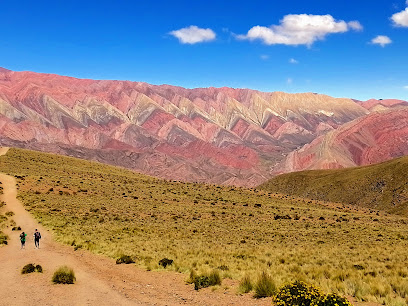
Plaza San Martin
Discover the vibrant heart of Humahuaca at Plaza San Martin, where nature, culture, and community come alive amidst stunning Andean scenery.
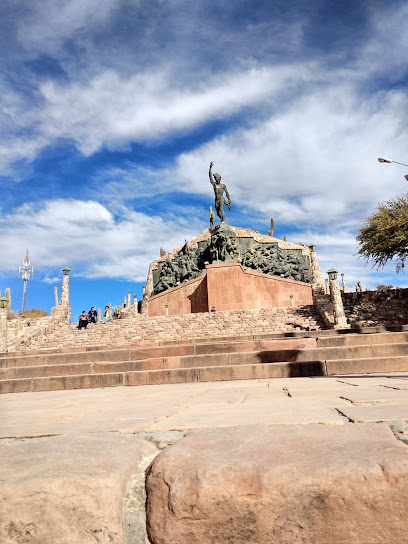
Monumento a la Dignidad Humahuaqueña.
Explore the Monument to the Dignity of Humahuaca in Jujuy Province, a vibrant tribute to indigenous culture amidst stunning Andean landscapes.
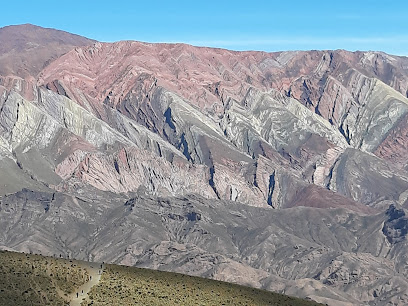
Inca Cueva
Discover the stunning landscapes and rich history of Inca Cueva, a premier hiking destination in Jujuy Province, Argentina.
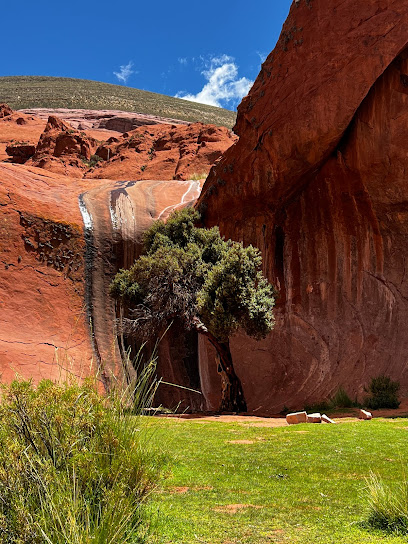
Peña Blanca
Experience exhilarating climbs and stunning views at Peña Blanca, a natural rock climbing gem in the heart of Humahuaca, Jujuy Province, Argentina.
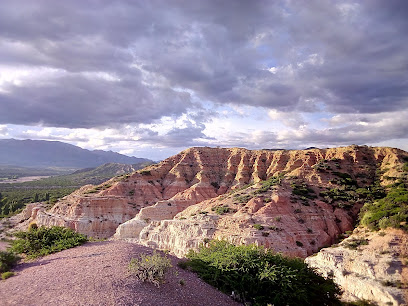
Cabildo de Humahuaca - Museo del Músico
Discover the musical heritage of Argentina at the Cabildo de Humahuaca - Museo del Músico, a unique cultural gem in the heart of Jujuy Province.
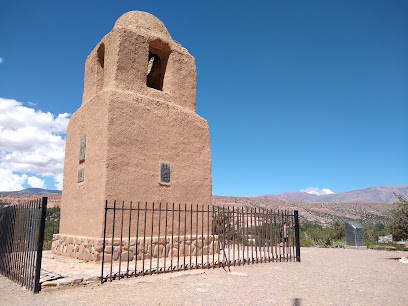
Torre de Santa Bárbara
Explore the rich heritage of Argentina at Torre de Santa Bárbara, a captivating monument in Humahuaca offering stunning views and historical insights.
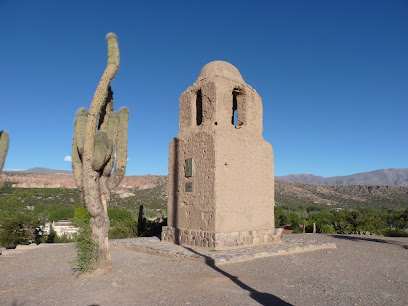
Unmissable attractions to see
Pucará de Tilcara
Explore the breathtaking archaeological wonder of Pucará de Tilcara, a historical site that showcases the rich cultural heritage of Argentina's indigenous people.
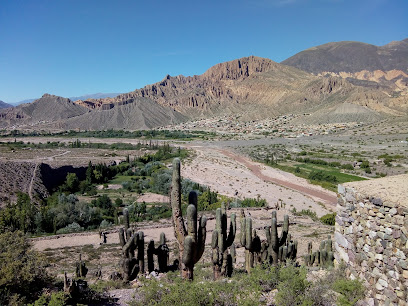
Mirador A la cercanía de los 14 Colores del Hornocal
Discover the breathtaking beauty of the 14 Colors of Hornocal at this stunning viewpoint in Jujuy Province, Argentina.
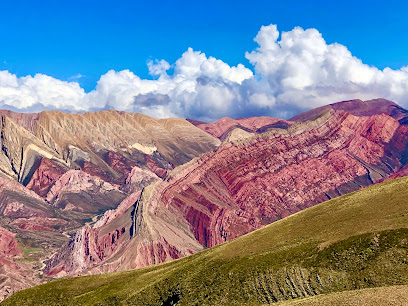
Cerro El Porito
Experience the stunning beauty of Cerro El Porito in Purmamarca, where vibrant colors and breathtaking landscapes await every traveler.
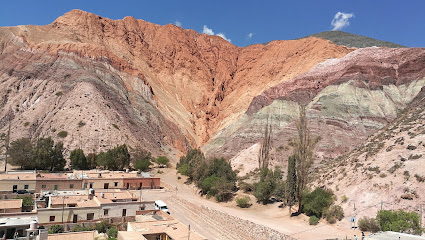
Salinas Grandes, Jujuy, Argentina
Experience the breathtaking beauty of Salinas Grandes in Jujuy, Argentina – a mesmerizing salt flat that captures the essence of nature's artistry.
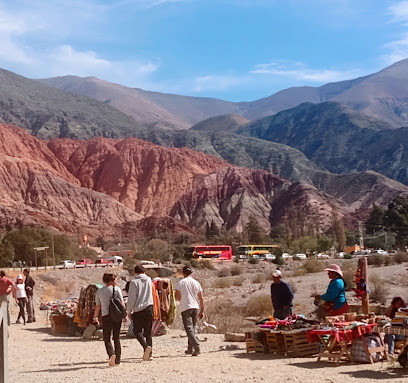
Garganta del Diablo
Explore the breathtaking beauty of Garganta del Diablo in Jujuy, Argentina—where nature's wonders await every adventurer.
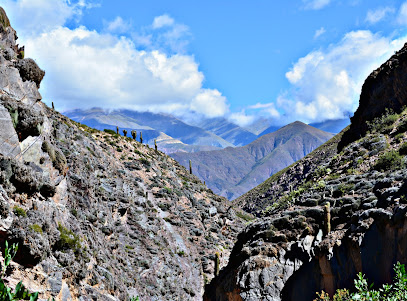
Monumento a los Héroes de la Independencia
Explore the grandeur of Monumento a los Héroes de la Independencia in Humahuaca, a historical landmark celebrating Argentina's fight for freedom and resilience.
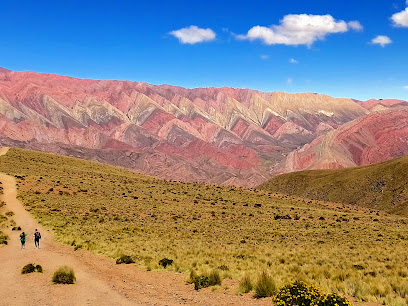
Plaza Sargento Mariano Gómez
Experience the charm of Plaza Sargento Mariano Gómez in Humahuaca, where stunning landscapes meet vibrant local culture in a serene park setting.
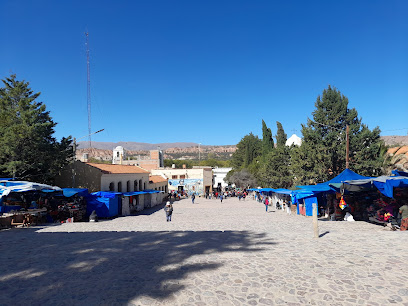
Comienzo Quebrada de las Señoritas
Explore the breathtaking landscapes and hiking adventures at Comienzo Quebrada de las Señoritas in Jujuy, Argentina's hidden natural wonder.
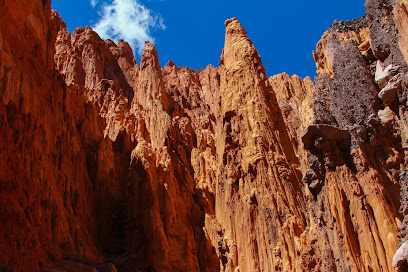
Plaza San Martin
Discover the vibrant culture and natural beauty at Plaza San Martin, the heart of Humahuaca, Argentina, where history and community come alive.
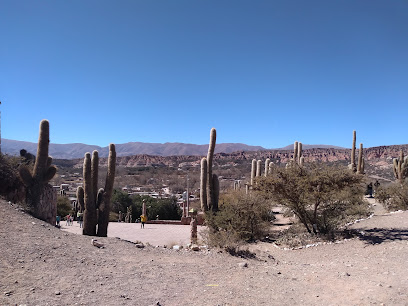
Camino a la Garganta del Diablo
Explore the stunning beauty of Caminos a la Garganta del Diablo, a nature preserve in Tilcara, Jujuy, home to breathtaking landscapes and rich biodiversity.
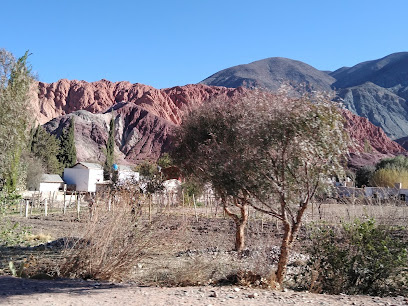
Termas del Río Jordán
Discover the therapeutic hot springs and hiking adventures at Termas del Río Jordán, a serene escape in the heart of Jujuy, Argentina.
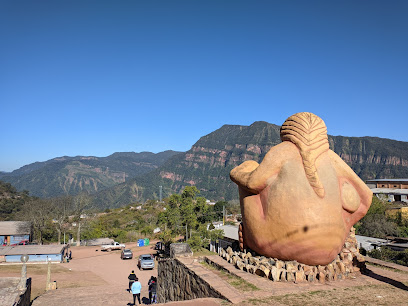
Ojos Del Salar
Experience the stunning blue pools of Ojos Del Salar in Jujuy, Argentina - a breathtaking natural wonder perfect for adventure and photography.
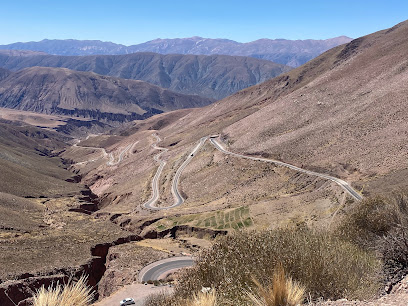
Inca Cueva
Explore the stunning natural beauty and rich heritage of Inca Cueva in Jujuy Province - a must-visit destination for nature lovers and hikers.
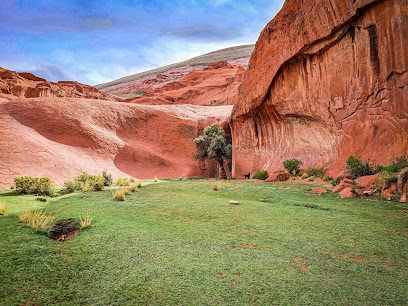
Quebrada de las Señoritas
Discover the breathtaking rock formations and vibrant landscapes of Quebrada de las Señoritas in Jujuy, Argentina – a natural marvel waiting to be explored.
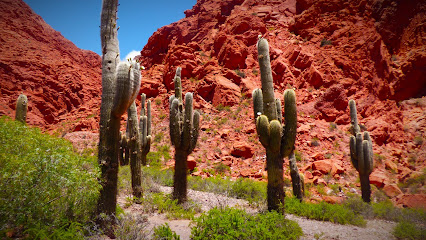
Vista Panorámica de la Cuesta de Aparzo - Camino al Hornocal
Discover the stunning vistas at Vista Panorámica de la Cuesta de Aparzo in Jujuy, Argentina—an unparalleled natural wonder beckoning travelers.
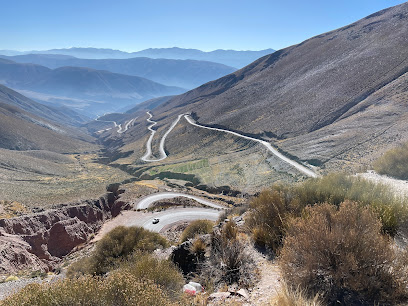
Essential places to dine
Los Puestos Restaurante
Experience authentic Argentine flavors at Los Puestos Restaurante in Tilcara—where local cuisine meets breathtaking mountain views.
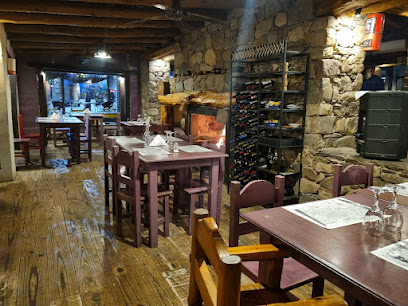
Aisito
Discover Aisito in Humahuaca: where Argentine flavors meet vibrant ambiance for an unforgettable dining experience.
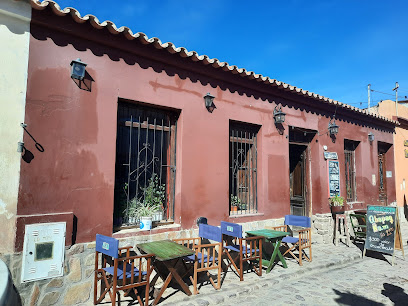
Pachamanka Restaurante
Discover Pachamanka Restaurante: A culinary haven in Humahuaca offering authentic Argentine flavors alongside fine wines and aromatic coffee.
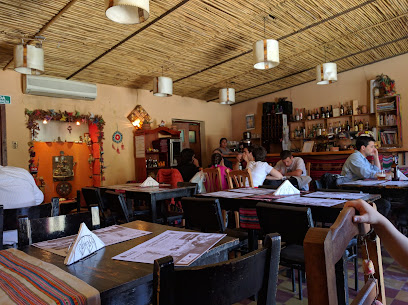
A La Payla Restaurant
Discover authentic Argentine cuisine at A La Payla Restaurant in Tilcara – a must-visit destination for food lovers.
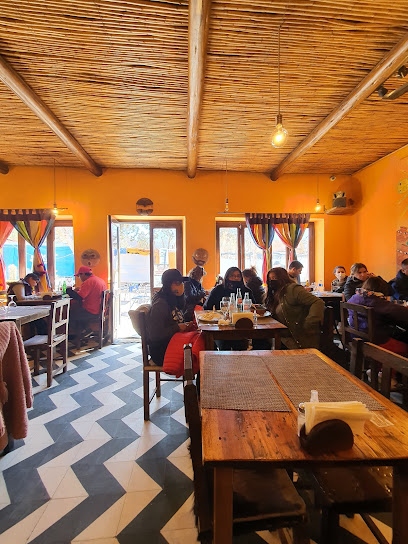
Restaurant El Fortín
Experience the essence of Argentinian cuisine at Restaurant El Fortín in Humahuaca - where tradition meets flavor in every dish.
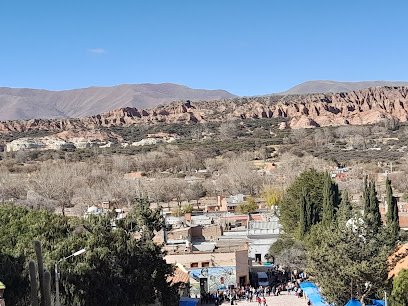
La Tuna Restaurante
Discover authentic Argentinian flavors at La Tuna Restaurante in Humahuaca – where every dish tells a story.
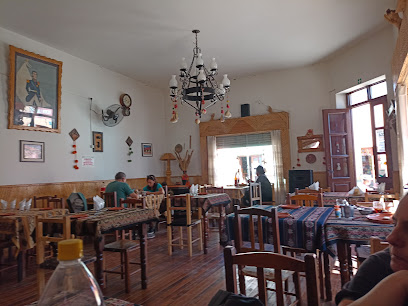
Las Glorias Resto Bar
Discover authentic Argentine flavors at Las Glorias Resto Bar in Humahuaca – where every meal tells a story.
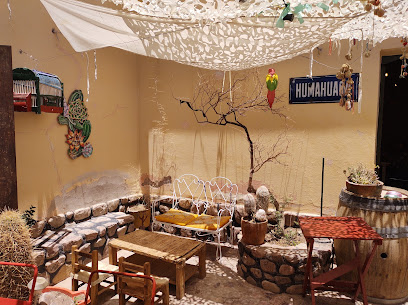
Julieta Limón y Sal
Discover authentic Argentinian and vegetarian cuisine at Julieta Limón y Sal in Humahuaca - a culinary gem in Jujuy Province.

RESTAURANTE TEJERINA
Savor traditional Argentinian flavors at Restaurante Tejerina in Humahuaca – a must-visit culinary gem in Jujuy Province.
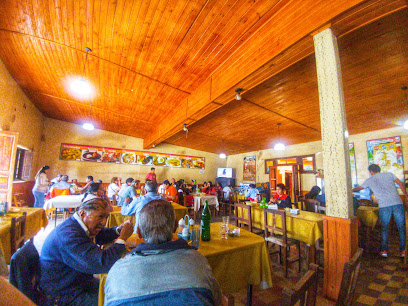
La Puerta Verde Hostel & Bar
Discover La Puerta Verde Hostel & Bar: A vibrant fusion of local culture, delicious food, and cozy accommodations in Humahuaca.
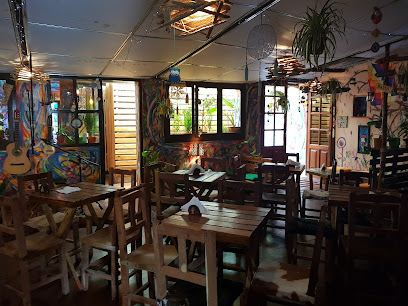
Peña de Fortunato
Discover authentic Argentine flavors at Peña de Fortunato in Humahuaca – where tradition meets taste in every dish.
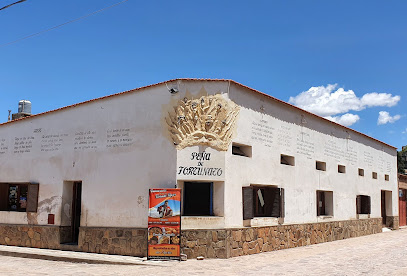
El Portillo
Experience authentic Argentine grilling amidst stunning landscapes at El Portillo in Humahuaca – a culinary gem that captures the essence of Jujuy.
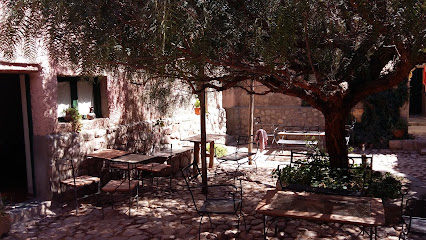
La Casona
Experience authentic Argentine cuisine at La Casona in Humahuaca – where tradition meets flavor in every dish.
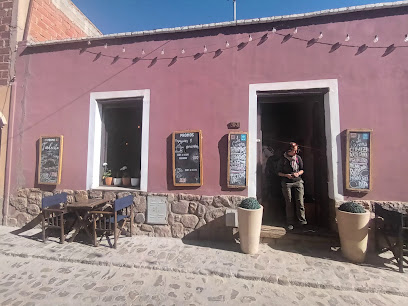
Ser Andino Restaurante
Experience authentic Argentinian flavors at Ser Andino Restaurante in Humahuaca - a culinary gem amidst stunning mountain scenery.
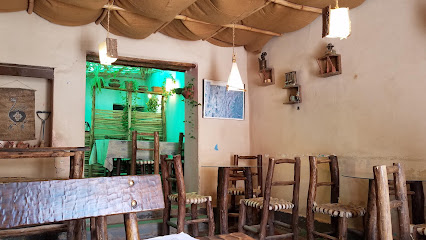
La Vieja Cazona
Experience authentic Argentine cuisine at La Vieja Cazona in Humahuaca – where tradition meets flavor.
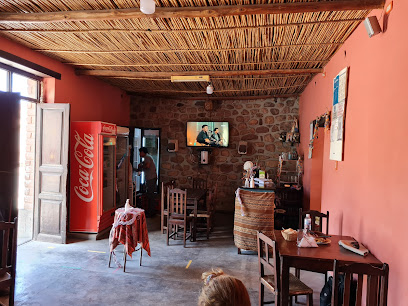
Markets, malls and hidden boutiques
Mirador A la cercanía de los 14 Colores del Hornocal
Experience the stunning natural beauty and vibrant colors of the Hornocal mountains at this breathtaking viewpoint in Jujuy, Argentina.
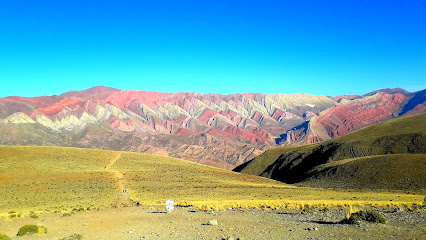
Monumento a los Héroes de la Independencia
Discover the Monumento a los Héroes de la Independencia in Humahuaca, a stunning tribute to Argentina's fight for freedom amidst breathtaking landscapes.
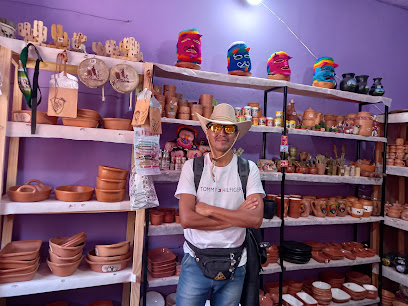
Arte Guanuco
Discover the essence of Argentine handicrafts at Arte Guanuco in Jujuy, where every artisan piece tells a unique story.
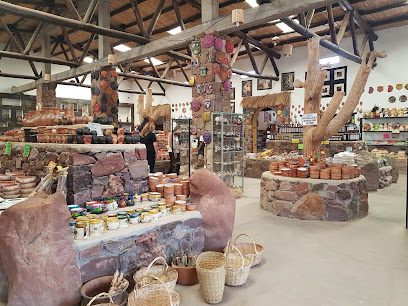
Quebrada de Humahuaca
Explore the stunning landscapes and rich heritage of Quebrada de Humahuaca, a UNESCO World Heritage site in Argentina's northern Andes.
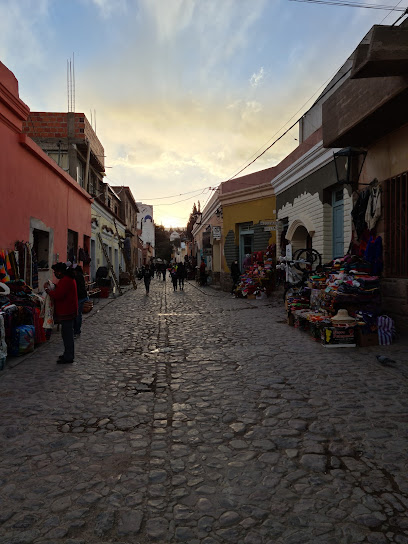
Yanallama, Libros y Café de especialidad
Discover the perfect blend of specialty coffee and literature at Yanallama, a cozy café in Humahuaca's vibrant Plaza Mirador Inclusiva.
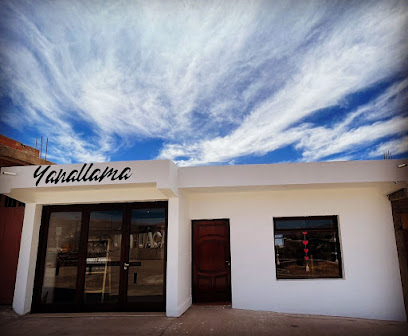
ARTESANIAS SASAKUY
Explore the vibrant world of Argentine craftsmanship at ARTESANIAS SASAKUY, where unique handmade treasures await every visitor.

Paseo de los artesanos humahuaqueños
Discover the vibrant artisan market in Humahuaca, Jujuy, where local crafts, flavors, and culture come together in a colorful tapestry of experiences.
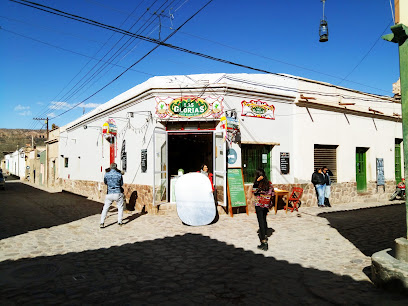
Manos Andinas Jujuy
Explore Manos Andinas Jujuy in Humahuaca for authentic Andean textiles and a glimpse into the rich cultural heritage of Jujuy Province.
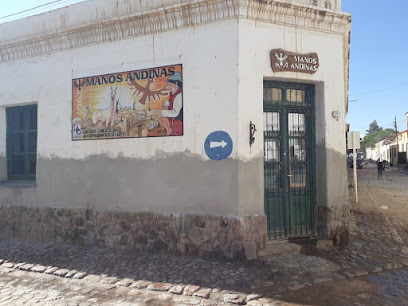
FERIA AMERICANA
Discover Feria Americana in Humahuaca - a vibrant clothing market showcasing local craftsmanship and unique cultural treasures in Jujuy Province.
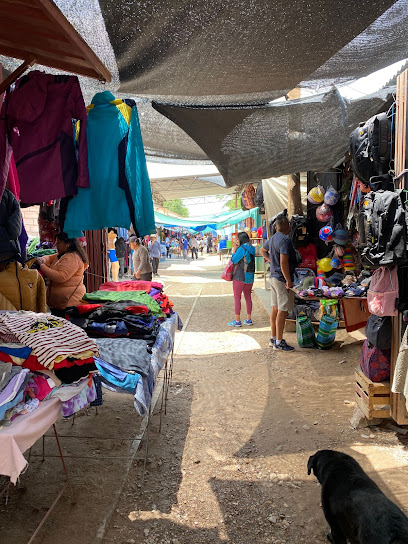
Despensa Dilmer
Explore the heart of Humahuaca at Despensa Dilmer, where local flavors and culture come alive in a vibrant market atmosphere.

Qollca Humahuaca
Explore Qollca Humahuaca for authentic Argentine souvenirs that embody the spirit and culture of the Andean region.
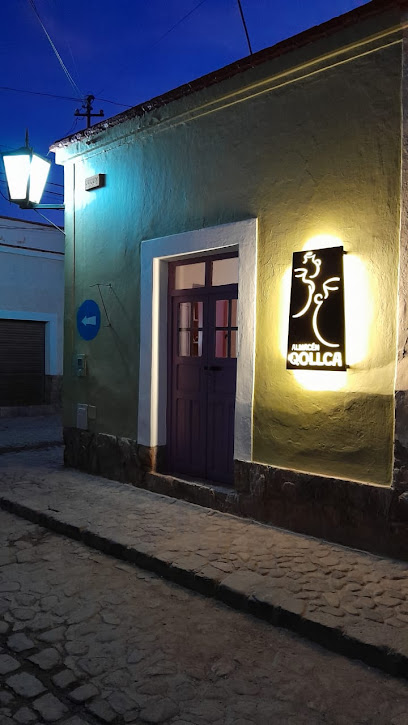
La llama & la wawa
Explore the vibrant art of Humahuaca at La Llama & La Wawa, a unique paintings store celebrating local creativity and culture.
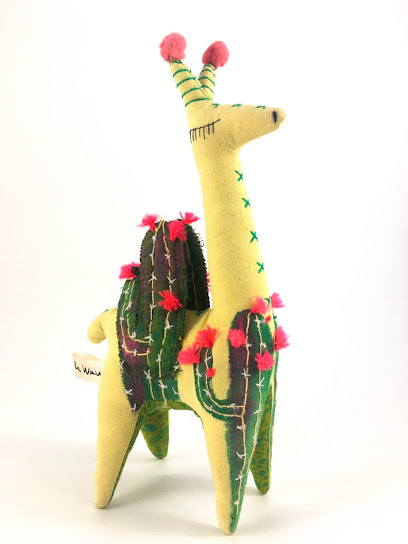
Humahuaca Artesanías y Regionales
Explore the rich artisanal heritage at Humahuaca Artesanías y Regionales, where every craft tells a story of Jujuy's vibrant culture.
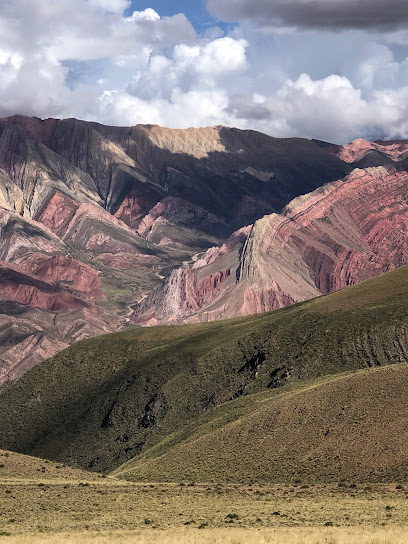
Verdulería y frutería LOS 3 HERMANOS
Explore the vibrant flavors of Humahuaca at Verdulería y Frutería Los 3 Hermanos, where fresh produce meets local culture.
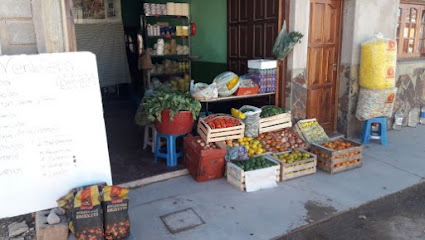
Despensa y verdulería WARMI
Explore the vibrant flavors of Humahuaca at Despensa y Verdulería WARMI, your local source for fresh produce and authentic Argentine goods.
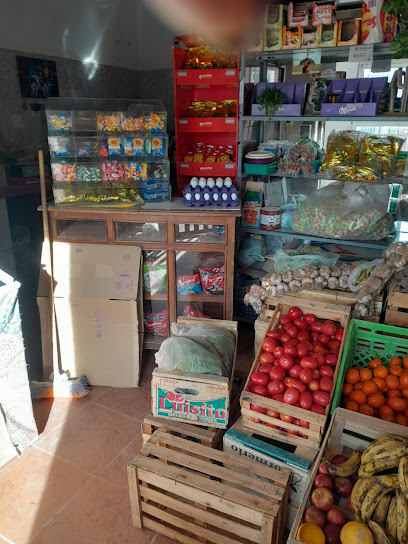
Essential bars & hidden hideouts
Aisito
Indulge in the flavors of Argentina at Aisito, a vibrant eatery in Humahuaca with a lively piano bar atmosphere and a menu to delight every palate.

Pachamanka Restaurante
Discover the rich flavors of Argentina at Pachamanka Restaurante in Humahuaca, where every dish tells a story of tradition.

Las Glorias Resto Bar
Savor the flavors of regional Argentine cuisine at Las Glorias Resto Bar in Humahuaca, a culinary delight for every traveler.
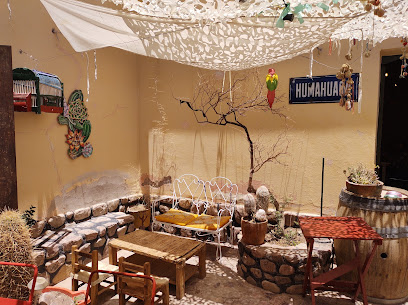
Julieta Limón y Sal
Experience the vibrant taste of Argentina at Julieta Limón y Sal, where traditional dishes meet vegetarian delights in the heart of Humahuaca.
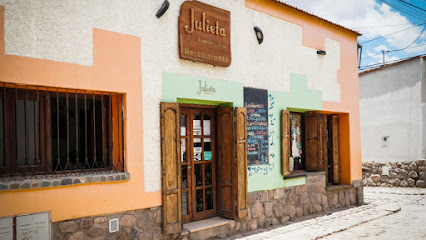
La Puerta Verde Hostel & Bar
Experience the vibrant culture and hospitality at La Puerta Verde Hostel & Bar in Humahuaca, where comfort meets local charm amidst stunning Andes views.
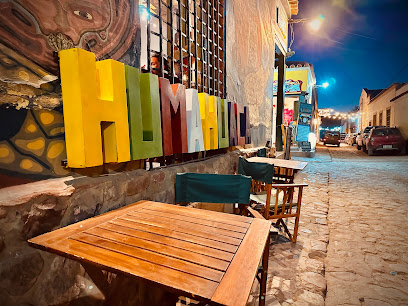
Peña de Fortunato
Experience authentic Argentinian flavors at Peña de Fortunato, a culinary gem in Humahuaca, Jujuy, offering a rich taste of local culture.
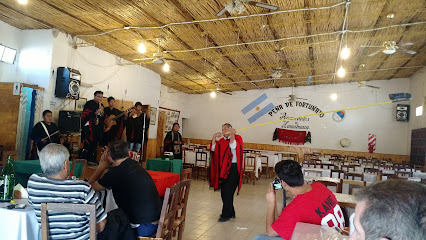
El Portillo
Experience the authentic flavors of Argentina at El Portillo, a charming grill and hotel in the heart of Humahuaca, Jujuy Province.

La Casona
Savor the flavors of Argentina at La Casona, a charming restaurant in Humahuaca, Jujuy, offering authentic local cuisine and warm hospitality.
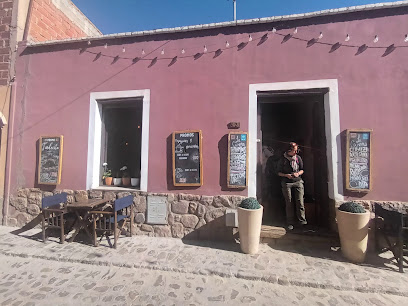
La Vieja Cazona
Experience the authentic flavors of Argentine cuisine at La Vieja Cazona in Humahuaca, a delightful culinary destination for travelers.
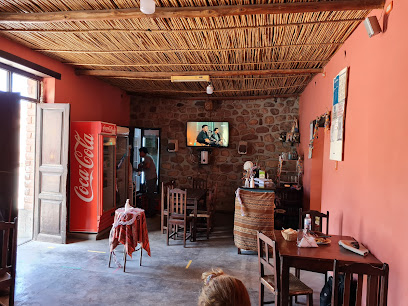
PICAN BURGERS
Discover the vibrant flavors of Humahuaca at Pican Burgers, where gourmet burgers meet a lively atmosphere.
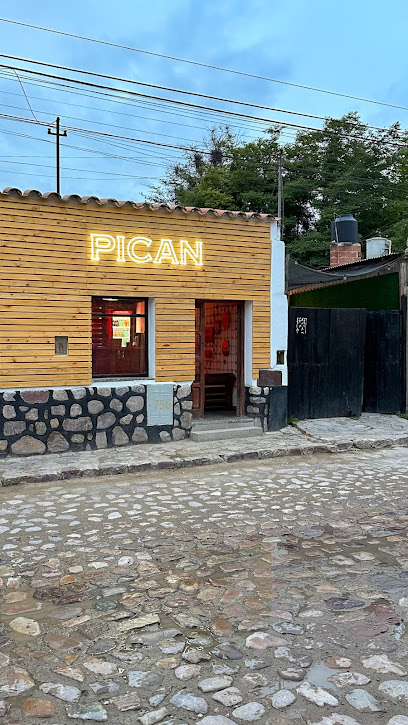
El Caminante
Discover the flavors of Argentina at El Caminante, a cozy restaurant in Humahuaca offering authentic local dishes and warm hospitality.
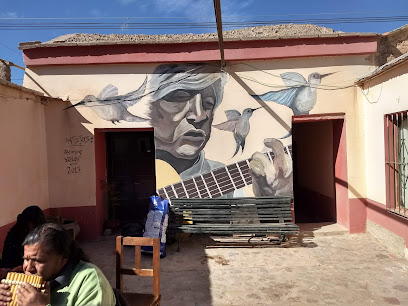
K'Bar Classic
Experience the vibrant live music scene at K'Bar Classic in Humahuaca, where local culture and unforgettable performances come together.

Parador El Chango
Experience authentic Argentine cuisine and warm hospitality at Parador El Chango in the heart of Humahuaca, Jujuy.
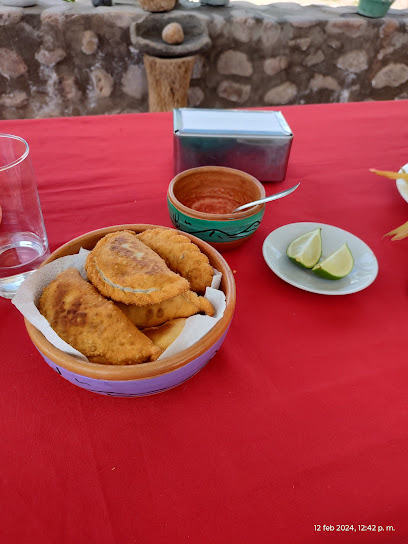
INSOMNIO Bar
Experience the vibrant nightlife at INSOMNIO Bar in Humahuaca, Jujuy - a must-visit for great drinks and lively atmosphere.
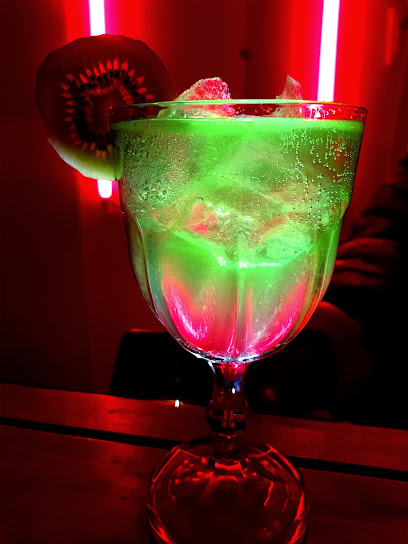
Cerveza artesanal quebrada de Humahuaca
Discover the essence of Jujuy Province at Cerveza Artesanal Quebrada de Humahuaca, where craft beer meets breathtaking Andean landscapes.
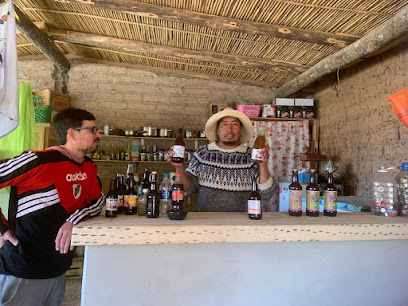
Local Phrases about Quebrada de Humahuaca
-
- HelloHola
[oh-lah] - GoodbyeAdiós
[ah-dyohs] - YesSí
[see] - NoNo
[noh] - Please/You're welcomePor favor/De nada
[por fah-bor/de nah-dah] - Thank youGracias
[grah-syahs] - Excuse me/SorryPerdón
[pehr-dohn] - How are you?¿Cómo estás?
[koh-moh ehs-tahs] - Fine. And you?Bien. ¿Y tú?
[byen. ee too] - Do you speak English?¿Hablas inglés?
[ah-blahs een-glehs] - I don't understandNo entiendo
[noh ehn-tyen-doh]
- HelloHola
-
- I'd like to see the menu, pleaseMe gustaría ver el menú, por favor
[meh goos-tah-ree-ah behr ehl meh-noo, por fah-vor] - I don't eat meatNo como carne
[noh koh-moh kahr-neh] - Cheers!¡Salud!
[sah-loohd] - I would like to pay, pleaseMe gustaría pagar, por favor
[meh goos-tah-ree-ah pah-gar, por fah-vor]
- I'd like to see the menu, pleaseMe gustaría ver el menú, por favor
-
- Help!¡Ayuda!
[ah-yoo-dah] - Go away!¡Vete!
[veh-teh] - Call the Police!¡Llama a la Policía!
[yah-mah ah lah poh-lee-see-ah] - Call a doctor!¡Llama a un doctor!
[yah-mah ah oon dohk-tohr] - I'm lostEstoy perdido
[ehs-toy pehr-dee-doh] - I'm illEstoy enfermo
[ehs-toy ehn-fehr-moh]
- Help!¡Ayuda!
-
- I'd like to buy...Me gustaría comprar...
[meh goos-tah-ree-ah kohm-prahr...] - I'm just lookingSólo estoy mirando
[soh-loh ehs-toy meer-ahn-doh] - How much is it?¿Cuánto cuesta?
[kwan-to kwehs-tah] - That's too expensiveEsto es demasiado caro
[ehs-toh ehs deh-mah-syah-doh kahr-oh] - Can you lower the price?¿Puede bajar el precio?
[pweh-deh bah-hahr ehl pree-syoh]
- I'd like to buy...Me gustaría comprar...
-
- What time is it?¿Qué hora es?
[keh oh-rah ehs] - It's one o'clockEs la una
[ehs lah oo-nah] - Half past (10)Las diez y media
[lahs dyehs ee meh-dee-ah] - MorningMañana
[mah-nyah-nah] - AfternoonTarde
[tahr-deh] - EveningNoche
[noh-cheh] - YesterdayAyer
[ah-yehr] - TodayHoy
[oy] - TomorrowMañana
[mah-nyah-nah] - 1Uno
[oo-noh] - 2Dos
[dohs] - 3Tres
[trehs] - 4Cuatro
[kwah-troh] - 5Cinco
[seen-koh] - 6Seis
[says] - 7Siete
[syeh-teh] - 8Ocho
[oh-choh] - 9Nueve
[nweh-veh] - 10Diez
[dyehs]
- What time is it?¿Qué hora es?
-
- Where's a/the...?¿Dónde está...?
[dohn-deh ehs-tah] - What's the address?¿Cuál es la dirección?
[kwal ehs lah dee-rehk-syon] - Can you show me (on the map)?¿Puedes mostrarme (en el mapa)?
[pweh-dehs mohs-trar-meh (ehn ehl mah-pah)] - When's the next (bus)?¿Cuándo es el próximo (autobús)?
[kwan-doh ehs ehl proh-ksee-moh (ow-toh-boos)] - A ticket (to ....)Un boleto (a ....)
[oon boh-leh-toh (ah)]
- Where's a/the...?¿Dónde está...?
History of Quebrada de Humahuaca
-
The Quebrada de Humahuaca has been inhabited for over 10,000 years, making it a significant archaeological and cultural treasure. The earliest inhabitants were hunter-gatherers who left behind evidence of their presence in the form of cave paintings and petroglyphs. The region later saw the rise of the Omaguaca people, who established complex agricultural societies and built impressive stone fortresses known as pukaras. These indigenous cultures developed intricate weaving, pottery, and metalwork traditions that continue to influence the local crafts today.
-
In the late 15th century, the Inca Empire expanded into the Quebrada de Humahuaca, integrating it into their vast network of territories. The Incas constructed roads and tambos (roadside inns) to facilitate travel and trade along the Camino Inca, which ran through the valley. This period saw the introduction of Inca administrative systems, agricultural terraces, and advanced irrigation techniques, which significantly impacted the local way of life. The influence of the Inca can still be seen in the region's archaeological sites and cultural practices.
-
The Spanish arrived in the Quebrada de Humahuaca in the 16th century, bringing profound changes to the region. They imposed their rule and religion, leading to the construction of colonial churches and the spread of Catholicism. The Spanish also exploited the region's agricultural and mineral resources, significantly altering the local economy and social structures. Despite these changes, indigenous communities persisted, often blending their traditions with the imposed colonial culture.
-
During the early 19th century, the Quebrada de Humahuaca played a crucial role in the Argentine Wars of Independence. The valley served as a strategic corridor for the movement of troops and supplies, and it was the site of several key battles between the Spanish royalists and the patriot forces. Heroic figures such as General Manuel Belgrano and local leaders like Juana Azurduy and Martín Miguel de Güemes are remembered for their contributions to the struggle for independence. The region's rugged terrain and fiercely independent spirit proved to be significant assets in the fight against colonial rule.
-
In recent decades, the Quebrada de Humahuaca has experienced a cultural renaissance, with a renewed focus on preserving and celebrating its rich heritage. This effort culminated in 2003 when the valley was designated a UNESCO World Heritage Site, recognizing its outstanding cultural and historical significance. The region is now a vibrant hub of cultural tourism, with numerous festivals, museums, and cultural centers dedicated to showcasing the unique traditions and history of the Quebrada. Visitors can explore ancient ruins, colonial architecture, and vibrant markets, all set against the stunning backdrop of the Andean landscape.
Quebrada de Humahuaca Essentials
-
Quebrada de Humahuaca is located in the Jujuy Province of Argentina. The nearest major airport is Gobernador Horacio Guzmán International Airport in San Salvador de Jujuy, approximately 150 kilometers away. From the airport, you can take a taxi or a bus to the city center and then a bus or rent a car to reach Quebrada de Humahuaca. The journey by road takes around 2 to 3 hours and offers scenic views of the surrounding landscape.
-
Within Quebrada de Humahuaca, transportation options include local buses, taxis, and rental cars. Local buses connect the various towns and villages in the valley, making it easy to explore the area. Taxis are also available and can be hired for short trips or full-day excursions. Renting a car provides the most flexibility, especially if you plan to visit more remote areas at your own pace.
-
The official currency in Argentina is the Argentine Peso (ARS). While credit cards are accepted in many hotels, restaurants, and shops, it is advisable to carry cash, especially in smaller establishments and rural areas. ATMs are available in the larger towns of the Quebrada, such as Humahuaca, Tilcara, and Purmamarca, but it is wise to withdraw sufficient cash before traveling to more remote locations.
-
Quebrada de Humahuaca is generally a safe destination for tourists. However, as with any travel destination, it is important to take standard precautions. Avoid walking alone at night in unfamiliar areas and keep an eye on your belongings in crowded places. While the area does not have specific high-crime zones targeting tourists, remaining vigilant and aware of your surroundings is always recommended.
-
In case of emergency, dial 911 for immediate assistance. There are local police stations and medical facilities in the larger towns of the Quebrada, such as Humahuaca and Tilcara. It is recommended to have travel insurance that covers medical emergencies. For minor health issues, pharmacies are available where you can purchase over-the-counter medications.
-
Fashion: Do dress comfortably and wear layers, as temperatures can vary greatly. Avoid wearing overly revealing clothing. Religion: Do respect local customs, especially in religious sites. Remove hats and speak quietly. Public Transport: Do be respectful and offer your seat to elderly passengers. Don’t play loud music or eat on public transportation. Greetings: Do greet people with a friendly 'Hola' and a handshake. Eating & Drinking: Do try local foods like humita and tamales. Don’t refuse food offerings, as it is considered impolite.
-
To experience Quebrada de Humahuaca like a local, visit the weekly markets in towns such as Tilcara and Humahuaca, where you can purchase handmade crafts and fresh produce. Engage with locals, who are often very friendly and willing to share stories about their culture and traditions. Don’t miss the traditional music and dance performances, which are an integral part of the local culture. For a unique experience, take part in a pachamanca, a traditional Andean earth oven feast.
Nearby Cities to Quebrada de Humahuaca
-
Things To Do in Salta
-
Things To Do in San Pedro de Atacama
-
Things To Do in Uyuni
-
Things To Do in Potosi
-
Things To Do in San Miguel de Tucumán
-
Things To Do in Sucre
-
Things To Do in Antofagasta
-
Things To Do in Iquique
-
Things To Do in Santa Cruz de la Sierra
-
Things To Do in Cochabamba
-
Things To Do in Arica
-
Things To Do in Tacna
-
Things To Do in La Paz
-
Things To Do in Asuncion
-
Things To Do in Aregua

